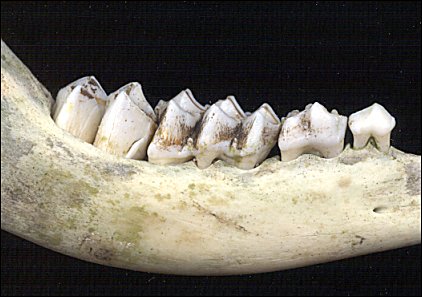

We've all heard of the Tooth Fairy, where a shed tooth placed under the pillow at bedtime is replaced during the night by a coin. The Tooth Fairy (also known as Mom and Dad) is able to do this without going broke because of a peculiar mammalian characteristic—we mammals are diphyodont. The word is not as difficult as it might seem. It just means that we have two generations of teeth, generally known as our baby teeth and our permanent teeth (oh, if only the last were true!)
Now you might ask why mammals have only two sets of teeth while
reptiles gain and lose teeth throughout life. Simple—with our high body temperature, we
live life in the fast lane. Food ground into small pieces digests rapidly, supplying
the required energy. To grind up food, teeth need to align just right. Gappy-toothed
reptiles can afford to swallow large chunks and digest them slowly, using the teeth
mostly to hold and rip. And you'll notice, no doubt, that economically
sophisticated reptiles carefully avoid any equivalent to the tooth fairy.

Contributor: Arthur H. Harris, Laboratory for Environmental Biology, Centennial Museum, University of Texas at El Paso.
Desert Diary is a joint production of the Centennial Museum and KTEP National Public Radio at the University of Texas at El Paso.

Lateral view of a jaw segment with teeth of a young deer. The three teeth on the right are deciduous (baby) teeth; the fourth tooth is the first of the permanent teeth and is not yet fully erupted; eventually, two more permanent teeth would have appeared and the deciduous teeth replaced. Centennial Museum specimen.
Feldhamer, G. A., L. C. Drickamer, S. H. Vessey, and J. F. Merritt. 1999. Mammalogy. Adaptation, Diveristy, and Ecology. McGraw-Hill, Boston. 563 pp.
Deciduous Dentition (oriented strictly toward human dentition)